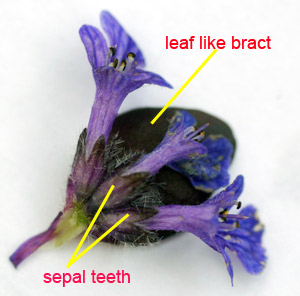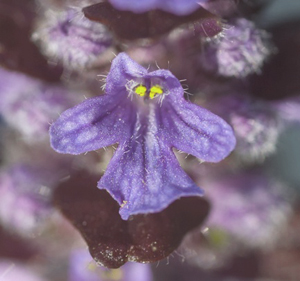Bugle
Leaves and stem
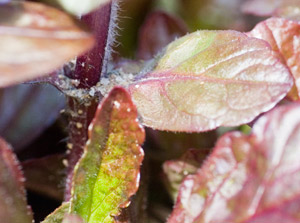
Bugle is a perennial herb that produces long (leafy) runners that root.
The leaves at the base of the upright stem are often in the form of a rosette and are between 4 and 7 cm in length.
They are quite 'shiny' and roughly oval being broad in the middle and tapering off towards the tip of the leaf. Sometimes, the leaves are richly pigmented - being purple, brown and bronze in colour.
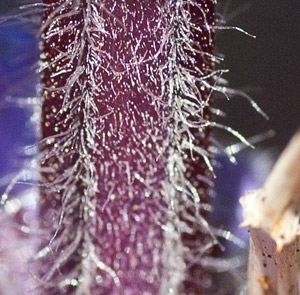
The stems are also quite coloured (red / purple), roughly square in cross section and bear numerous hairs (see image to the left).
Flowers and Fruits
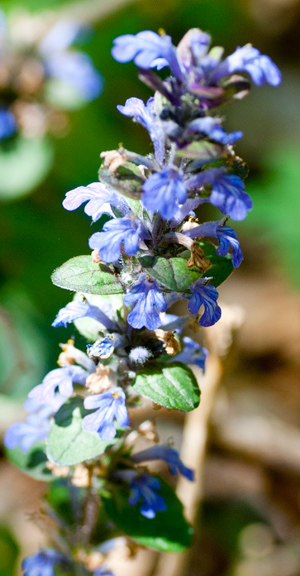
The flowers form on upright, coloured and hairy stems.
They are formed from petals that have fused together during their development to form a two lipped structure (see left hand image below).
The sepals too have joined together during their development to form a tube like structure. There are 5 'teeth' on this outer structure (see right hand image below).
Beneath the flower is a leaf-like structure or bract (also shown in the LH image below).
The flowers are a purple / blue colour - sometimes (though rarely) cream or pink.
Ecology and other notes
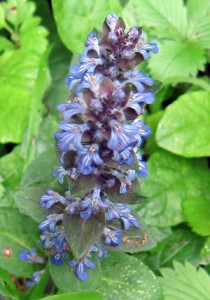
Bugle is to be found in damp, shady places in woodlands, hedgebanks and grassy meadows.
Bugle (Ajuga repens) belongs to the same family as deadnettles, yellow archangel and wound worts - the Lamiaceae, which were formerly known as the Labiates / Labiatae.
n.b.
Richard Mabey in "Flora Britannica"says on names - the C14th name was wodebroun; bugle probable comes from the dark lustrous long glass beads once sewn into clothes as ornaments.
